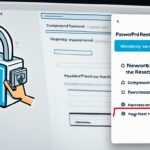Table of Contents
In this comprehensive guide, we will provide you with a step-by-step tutorial on how to reset your WordPress website. Whether you are experiencing issues with your current site, planning a major redesign, or simply want to start afresh, resetting your WordPress site can be the perfect solution. Follow our instructions to ensure a smooth and hassle-free reset process.
Are you wondering how to reset your WordPress website? Look no further. Our guide will walk you through each stage of the reset process. From deleting content to restoring default settings, we will cover everything you need to know to reset your site and begin anew. By the end of this guide, you’ll have a clean and optimized platform to work with.
During the reset process, please note that the following items will be removed from your site: pages, posts, media, templates, additional CSS, customizations, plugins, themes, and even your site’s database and file system. Rest assured that by following our guide, you will have a fresh canvas to work on.
It’s also important to mention that this guide is applicable not only to your live site but also to staging sites. So whether you want to reset your production site or experiment with changes on a staging environment, our guide has got you covered.
Using WP Reset Plugin to Reset Your WordPress Site
In this section, we will guide you through the process of resetting your WordPress site using the WP Reset plugin. The plugin offers a user-friendly solution for resetting site settings, allowing you to start fresh with just a few clicks.
Installing and Activating the WP Reset Plugin
To begin, follow these steps to install and activate the WP Reset plugin:
- Log in to your WordPress dashboard.
- Click on “Plugins” in the sidebar menu.
- Select “Add New.”
- In the search bar, type “WP Reset.”
- Click on the “Install Now” button next to the WP Reset plugin.
- Once installed, click on the “Activate” button to activate the plugin.
Resetting Your WordPress Site
Once you have successfully installed and activated the WP Reset plugin, follow these steps to reset your WordPress site:
- Click on “WP Reset” in the sidebar menu of your WordPress dashboard.
- In the WP Reset plugin settings, review the information and warnings provided.
- Scroll down to the “Reset Site” section and click on the red “Reset” button.
- A confirmation pop-up will appear. Type “reset” in the input field to confirm the reset.
- Click on the “Reset WordPress” button to initiate the site reset.
Creating and Using Snapshots
With the WP Reset plugin, you have the option to create and use snapshots, which allow you to restore your site to a specific point in time. Snapshots are useful for testing changes or experimenting with new themes and plugins without affecting your live site. Follow these steps to create and use snapshots:
- Click on the “Snapshots” tab in the WP Reset plugin settings.
- Click on the “Create Snapshot” button to create a new snapshot.
- Once created, snapshots will be displayed in a table with the option to restore or delete them.
- To restore a snapshot, click on the “Restore” button next to the desired snapshot.
Reactivating Themes and Plugins
After resetting your WordPress site, you will need to reactivate your themes and plugins. To reactivate them, follow these steps:
- In the WP Reset plugin settings, scroll down to the “Auto Reactivate” section.
- Click on the checkboxes next to the themes and plugins you want to reactivate.
- Click on the “Reactivate” button to reactivate the selected themes and plugins.
Please note that the WP Reset plugin is not compatible with WordPress.com sites. If you are using WordPress.com, there are alternative plugins available for resetting your WordPress site.
With the WP Reset plugin, resetting your WordPress site is a straightforward process. Whether you want to start fresh, test changes, or troubleshoot site issues, the WP Reset plugin provides a convenient solution for resetting your site settings. However, always remember to backup your data before performing a reset to avoid any unintended data loss. Now that you are familiar with using the WP Reset plugin, let’s explore alternative methods for resetting a WordPress site in the next section.
Resetting WordPress Without a Plugin and Other Options
In addition to using a plugin, there are alternative methods available to reset a WordPress site. These methods offer manual WordPress reset options and provide flexibility for users who prefer not to rely on plugins. Let’s explore these alternative options below.
Manual WordPress Reset
A manual WordPress reset involves accessing cPanel or using an FTP client to delete files and rerun the WordPress script. Here is a step-by-step guide to help you through the process:
- Access your hosting account’s cPanel or use an FTP client to connect to your website files.
- Navigate to the root directory of your WordPress installation.
- Locate and delete the wp-content folder, which contains themes, plugins, and media files. This step ensures that the site starts fresh without any existing content.
- Next, delete the .htaccess file, which is responsible for website configuration. This file will be automatically regenerated when you visit the website.
- Lastly, visit your WordPress website in a browser to rerun the WordPress installation script. This will generate a fresh database and prompt you to create a new admin account.
While a manual WordPress reset can be effective, it is essential to back up your website files and database before proceeding. This precautionary measure will safeguard your data.
Other Tools for Resetting WordPress
In addition to the manual reset method, there are other tools available in the WordPress repository that can help you reset your site. These tools offer different functionalities and cater to diverse user preferences. Some popular options include:
- WordPress Reset: A plugin that allows you to reset your entire site or specific database tables.
- Database Reset: A plugin that enables you to reset your WordPress database to its default settings.
- WP-Optimize: A plugin that not only resets your site but also optimizes your database for improved performance.
These tools provide alternative methods for resetting your WordPress site, giving you flexibility and control over the process.
Resetting a WordPress Multisite
If you are managing a WordPress multisite network, the reset process may differ slightly. To reset a WordPress multisite, you need to:
- Access the Network Admin dashboard.
- Navigate to the Sites menu and select the specific site you want to reset.
- Click on the “Backend” link to access the site’s dashboard.
- Follow the manual reset or use a plugin, as mentioned in the previous sections, to reset the specific site.
Resetting a WordPress multisite allows you to start fresh with one or more sites within your network.
When Is a Site Reset Not Necessary?
While resetting a WordPress site can be beneficial in various situations, there are instances when a reset may not be necessary:
When redesigning a section of the website: If you only need to make changes to a specific section or aspect of your website, a site reset may not be required. Instead, focus on modifying and updating the relevant elements without resetting the entire site.
Changing host providers: If you are migrating your website to a new host, a site reset may not be necessary. Instead, follow the migration process provided by your new host to seamlessly transfer your site without the need for a reset.
Consider these scenarios carefully before opting for a reset to avoid unnecessary disruptions to your website.
Conclusion
In conclusion, resetting a WordPress website can be a valuable solution for a variety of situations. Whether you need to resolve hacking issues, address website crashes and slow speeds, rebrand and repurpose your website, or facilitate website development, a reset can help you start fresh. The step-by-step guide we provided, along with the options to use plugins or perform a manual reset, makes it easy for users to efficiently reset their WordPress sites and ensure a clean and optimized platform.
However, it’s important to consider when not to reset your site. If you’re only making minor design changes or migrating to a new host provider, a reset may not be necessary. Remember to weigh the benefits and potential drawbacks before proceeding with a reset.
By understanding when and how to reset a WordPress site, users can rejuvenate their websites and eliminate any unwanted issues. Resetting provides the opportunity to create a fresh environment for your online presence, allowing you to better meet your goals and enhance user experience. So, take advantage of the options available to you and confidently reset your WordPress site to achieve a clean and optimized platform.
FAQ
How do I reset a WordPress website?
To reset a WordPress website, you can follow our step-by-step guide that covers deleting content, restoring default settings, and starting fresh. You can also use plugins or perform a manual reset without a plugin.
Can I reset a WordPress site with a plugin?
Yes, you can use the WP Reset plugin to reset your WordPress site. The plugin allows you to access its settings and perform a basic reset. You can also create and use snapshots, as well as reactivate themes and plugins after the reset.
Are there any other options to reset a WordPress site?
Yes, there are alternative methods to reset a WordPress site. You can perform a manual reset by accessing cPanel or using an FTP client to delete files and rerun the WordPress script. Additionally, there are other plugins available in the WordPress repository for resetting a site, such as WordPress Reset, Database Reset, and WP-Optimize.
Is the WP Reset plugin compatible with WordPress.com?
No, the WP Reset plugin is not compatible with WordPress.com. It is designed for self-hosted WordPress websites.
When is a site reset not necessary?
There are instances when a site reset may not be necessary, such as when making minor design changes or migrating to a new host provider. It is important to consider the specific needs and circumstances of your website before deciding to reset it.












